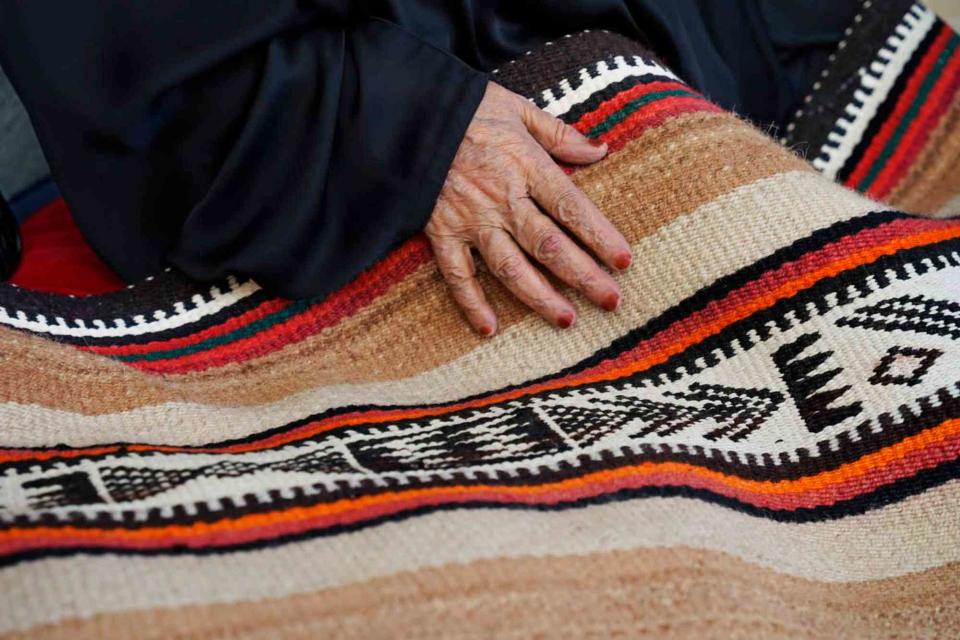This Kuwaiti Craft Is on UNESCO’s Intangible Cultural Heritage List — and You Can Buy Directly From the Bedouin Women Who Practice It
In Kuwait City, one group is preserving a centuries-old artistic tradition and reimagining it for the centuries to come.

Courtesy of Al Sadu Society Kuwait
A master sadu weaver shows off a recent piece.There are very few master practitioners of sadu, a traditional Bedouin weaving method, left in Kuwait. But the number might be even lower were it not for Sheikha Altaf al-Sabah.
The anthropologist and textile scholar has been promoting this ancestral art form for decades. She is cofounder of the Al Sadu Project, which since 1984 has been headquartered at Sadu House — a classic Kuwaiti-style home where visitors can learn the history of sadu through exhibitions, weaving workshops, and artists’ residencies. Al-Sabah is also the head of Al Sadu Weaving Cooperative Society, which counts 70 weavers among its active members. Thanks in part to these efforts, the Kuwaiti craft was added to UNESCO’s Intangible Cultural Heritage of Humanity list in 2020.

Courtesy of Al Sadu Society Kuwait
A woven fijah (runner) on display at Sadu House.Traditionally, sadu was passed down through generations, from mothers to daughters, via informal gatherings. Women often recited poetry, sang, and exchanged the day’s news as they worked on their weaving — social events that both cemented bonds and transmitted cultural knowledge. Their creations, such as rugs and cushions, were meant to enhance the beauty and functionality of the black Bedouin tent, most prominently with the ibjad, a woven divider to separate the women’s and men’s areas. Elaborate geometric designs are created using sheep’s wool and camel and goat hair dyed with spices and native plants like henna. Each color conveys a different message: red represents strength, orange the desert sun.
Growing up in Kuwait, I witnessed Sadu House evolve into the cultural-heritage destination it is today — exemplified by its successful push to include sadu in the national school curriculum. On a recent visit, I dropped in on a workshop to observe the weavers in action. Two Bedouin women clad in burkas sat at the end of the open courtyard surrounded by colorful weavings.

Courtesy of Al Sadu Society Kuwait
Bags from a Sadu House collaboration with Kuwaiti brand Folklore the Label.While both told me they hope to pass on the craft to the current generation, their approaches differ: the elder, Um Mohammad, said she was inspired by visual memories of sadu as a child more than 70 years ago; Mutaira, who is in her fifties, likes to experiment with modern designs and nontraditional colors.
Although the Bedouin lifestyle that produced this craft is fading, it lives on in the handwoven products made by cooperative members, available at the museum or through the online shop. Both Mutaira and Um Mohammad believe that sadu will not vanish, but rather evolve — shaped by modern interpretation, yet preserved by the ever-present inspiration of the desert.
A version of this story first appeared in the April 2023 issue of Travel + Leisure under the headline "Holding Patterns."
For more Travel & Leisure news, make sure to sign up for our newsletter!
Read the original article on Travel & Leisure.

